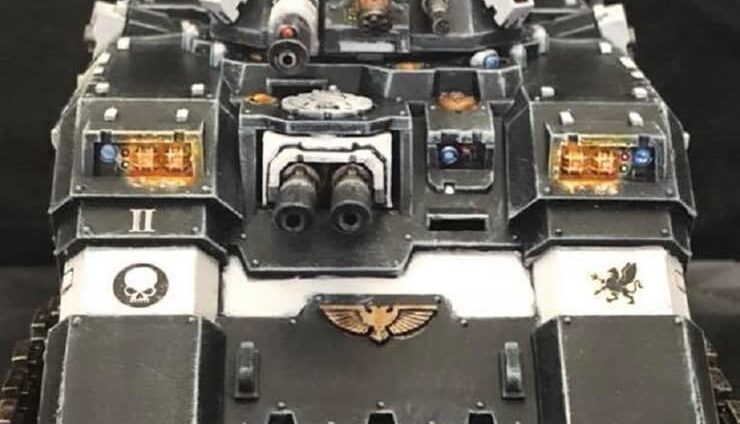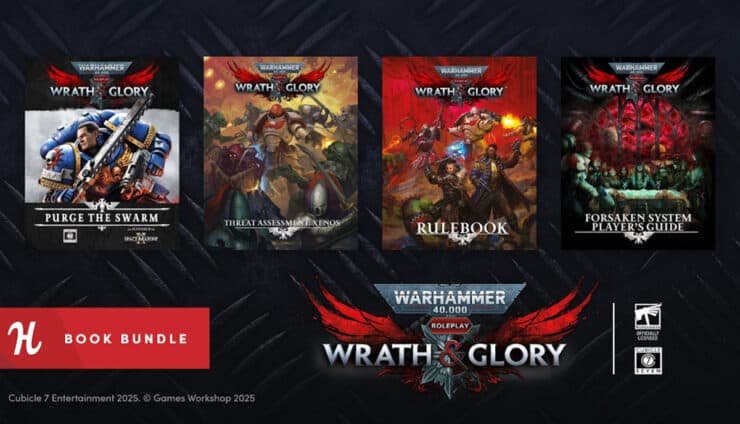Sometimes when you are trying to play less it actually turns out to be more. Take a look at some of these low point examples for playing Warhammer 40k.
For starters, let’s come at this from a 1,000-point list example. Depending on the faction you play, certain strategies may be more beneficial, but, we’ll get into that. Let’s take a look at some things to remember at low-point games.
Playing 40k at Those Awkward Low Point Levels
For MOST factions, 1,000 points is an awkward size. We know it’s good to have a unit that’s hard to scoop off the table and some units that act as hammers in the army. However, a 1,000 point game is a beast that doesn’t exactly allow for both of those in the same list.
Sure, Guard could feel pretty comfortable about taking a handful of Leman Russes and a sprinkling of some Guardsmen, but they are one of the exceptions. Space Marines are one of the factions that can’t really afford that luxury.
As of right now, GW puts way too much value in a 3+ save, so Space Marine units are usually ridiculously expensive across the board. They’ll have to either pick an MSU build or have VERY few models and gear towards a high-toughness resilient army.
Armies That Go For Board Control
Orks (or any horde army for that matter) are one of those factions that will usually double down on MSUs. At low points, there’s not a lot that can withstand the sheer weight of all the dice that Slugga Choppa Boyz can dish out. On top of that, horde armies take up more board presence and can trap things in combat much easier than elitist lists.
GSC are another faction that can bring a horrifying amount of attacks with Genestealers. At low points, a squad of twenty souped up Genestealers can wipe almost any unit off the board in a single round of combat. The only issue is what comes after the Genestealers kill the unit. If your opponent brought a dakka list like twin assault cannon Razorbacks, you can kiss all your bugs goodbye.
Bottom line is horde players are usually favored at low points but can still be crippled if they lose their blobs early on. Make sure you make decent trades with your units and think turns ahead.
Armies That Bring High Toughness & Armor Saves
This build is usually tougher to pull off at low points. Bringing an army with a decent save and banking on the idea of making them all is a far-fetched dream. Orks can utterly rip apart these lists with using Da Jump and flinging a 30-man Boy blob into your face turn one. (yes it gets around the deepstrike FAQ).
You’ll need to protect your infantry-shredding weaponry as best you can against horde armies at low points. Thankfully, most horde armies are low toughness and have crappy saves. You can capitalize on that by bringing a lot of shots with a small amount of AP.
Heavy bolters, assault cannons, even frag missile launchers, and hurricane bolters are good. But you’ll need to make sure that you protect the models that are loaded out with them because the enemy will try their best to tie it up in combat.
If you go the route of a high-toughness/low model count list, you will have to measure out every inch and use terrain features to the best of your ability. Make sure it’s extremely difficult for your enemy to deepstrike around you if possible and set your units up with the idea that you’ll be going second.
If you deploy your firepower right on the edge of the deployment zone, 8/10 times, your opponent will be able to reach you and have a field day wrecking your hopes and dreams.
Another important thing to consider is that bringing a low-model list against a horde army at low points means that you essentially sacrifice board control. At least for the first few turns. If you roll right and keep your guns out of harm’s way, you can regain lost ground.
What if Two of the Same Lists go Against Each Other?
We talked about how the opposite lists interact with each other. Now let’s go over what happens when two of the same lists meet in battle.
Horde on Horde
Horde on horde lists are basically like watching two trains collide into each other. Most horde armies take more than one blob unit because they’re so effective and cheap. One player may charge another blob and wipe it out only to have the other player charge THEIR blob with a spare that they had behind a rock. It comes down to who gets the charge first and who does the better rolling at this point.
Elite Vs. Elite
When talking about lists that go for an elite build, the games could go on a lot longer. The high Toughness and decent armor saves can stall the game a bit because both rounds will be trading blows but making saves. Essentially, it’ll boil down to whoever makes the first mistake.
If a player moves a unit of Marines and the opponent catches them out of position, that could cost the other player the game. Every unit lost in an elite army is a big deal. For every one space marine, someone could get two Ork Boyz.
These are all just some things to consider when you play a certain sized game that doesn’t exactly allow players to fit EVERYTHING they want to bring.
Do you go for horde lists at low points or do you prefer to build up and stay back with firepower? Which list seems stronger to you?
Let us know in the comments of our Facebook Hobby Group.











